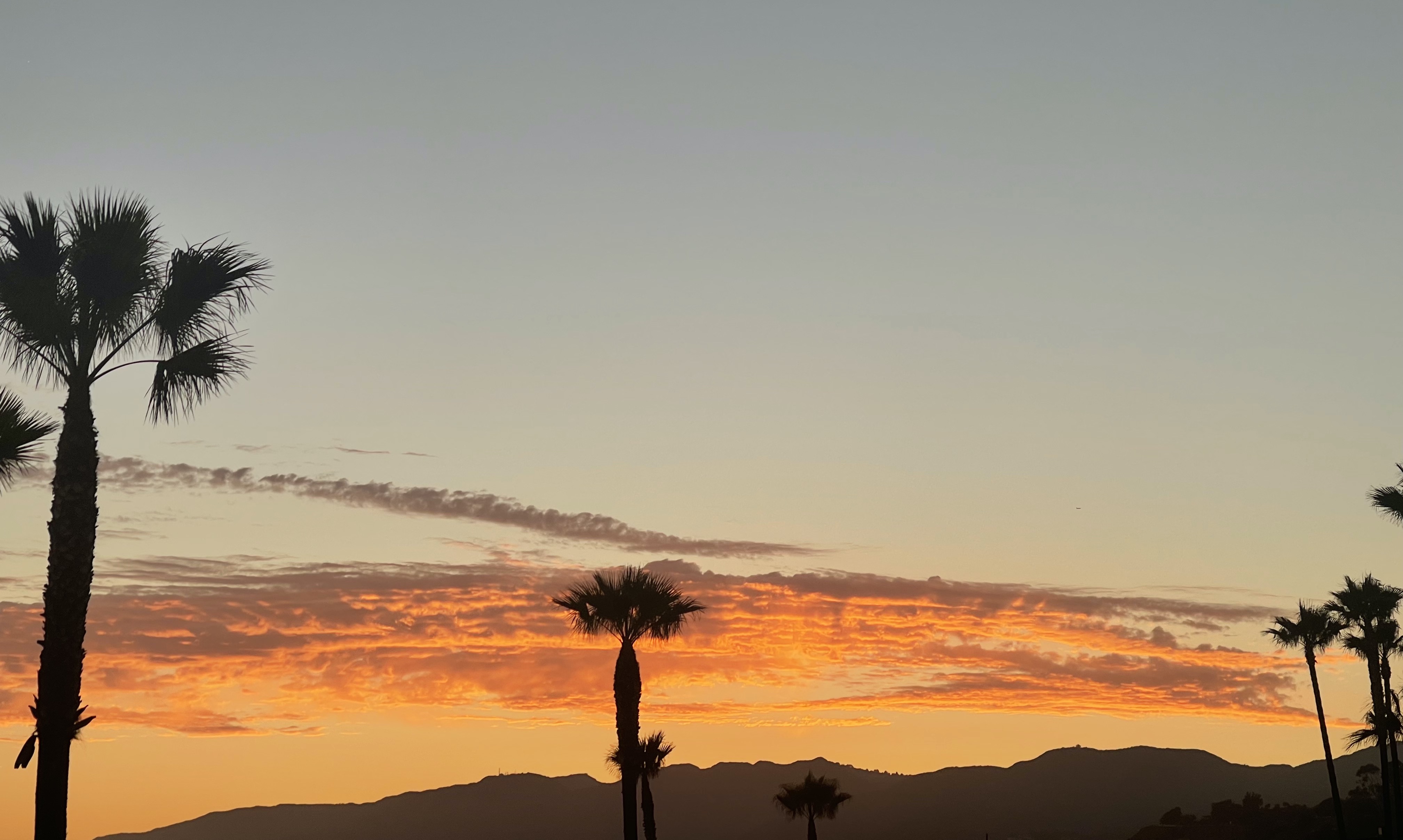On a Tuesday morning we leave the sunless Sunset for more southerly climes. In no great rush my friend is headed to San Diego, and I to Venice, both visits brief. She is driving the country simply to do so. We are expected eventually, for dinner perhaps, but have no sense of urgency. It is July, and, as soon as we leave San Francisco’s city limits, gorgeous in California.
We take the Pacific Coast Highway, California State Route 1.
It is a rare thing, having the time to pick the route for pleasure rather than speed, and I relish it as we swing around curves and are suddenly confronted with the ocean, which lurks to our right at all times. The sharp cliffs and sandy beaches alternate for the first few hours. The road is lined with cars pulled over to take pictures and then cars pulled over so that their drivers can put on their wetsuits and get in the pictures. We talk, and look, but do not stop. We have enough pictures, I think, in our minds. I remember moving to Asia, almost a decade ago, without owning a camera, claiming to remember things. Three months later I bought one, not for my own gain, instead so that I could show those far away my Tokyo sights. Our winding trip down the PCH will be similar to those first three months, in that I do remember it but there won’t be any pictures to show, and the memories will fade on their own, with time.
When living in California it is good to travel with those who do not, as a reminder of the beauty we may have become inured to . The coastline is gorgeous, and the three hours longer that it will take us, versus Highway 5, will change nothing in our day, would only narrow the breadth of topics we cover.
It is July, and we drive along the Pacific. My companion will, by the time she reaches San Diego and the guest room that awaits, have driven the entire west coast of the United States in three days. She will have stopped, in Portland for an evening, in San Francisco for a day, in Venice for dinner. She will have seen, in one stretch, a coastline I have only seen in pieces, or from airplanes. Leading the Subaru through the winding curves of the coast just south of Mavericks I catch glimpses of the waves while she looks out the window. This is my gift to her, a few hours away from the wheel, and it is a small enough present, but in a good location. More advantageous I think than having a friend drive the bare miles of Texas or Oklahoma, where the sights are repetitive, the road less demanding.
We make good time, save for when we are standing still, and we remember things we haven’t told each other. It’s been a year since our last meeting, and nearly four since we last lived in the same city, since we last had no urgency to our actions, no pressing sense of time.
In Shanghai life was like this often. The city would open up on weekends, our responsibilities fled with Friday’s close, and we would spend afternoons on the grass at the SRFC. We would enjoy the smog of evenings from someone’s balcony, or a bar, before heading out to dinner via scooter, taxi, and bicycle.
On the Pacific Coast Highway we pass through small towns built by long-ago surfers, where there are no gas stations. We pass through coastal towns with colleges, universities to their name, filled with clusters of students here for summer classes, or who have remained to be near the beach. Later on, coming south, we pass farming towns and air bases, long dusty tracks where people race their pickups along behind us and then, rather than passing, veer into a field. Where people in Civics just off work head into town on the long stretches of highway bordered only by green.
We end up back by the ocean, winding through Malibu. I drive while she looks for multimillionaires, or their houses. It is absurd, really, to change so quickly from one to the other, from surfing collective to farming town to mansions, and we drive on without pause, hungry for dinner and friends, for a break from the road. I have only been on it one day, but the memories of road trips come back easily, and I am glad to be stopping in Los Angeles, rather than continuing on to San Diego, to New Mexico, to Texas and beyond.
In Venice we find welcome and dinner. The weather is perfect as the sun sets, warm with a breeze. As we stand on the sidewalk before the restaurant we look at each other, companions for a day, and smile. Here we are, on Abbot Kinney in Venice, a place unlike where we woke yet more unlike where we’ve been in between.



